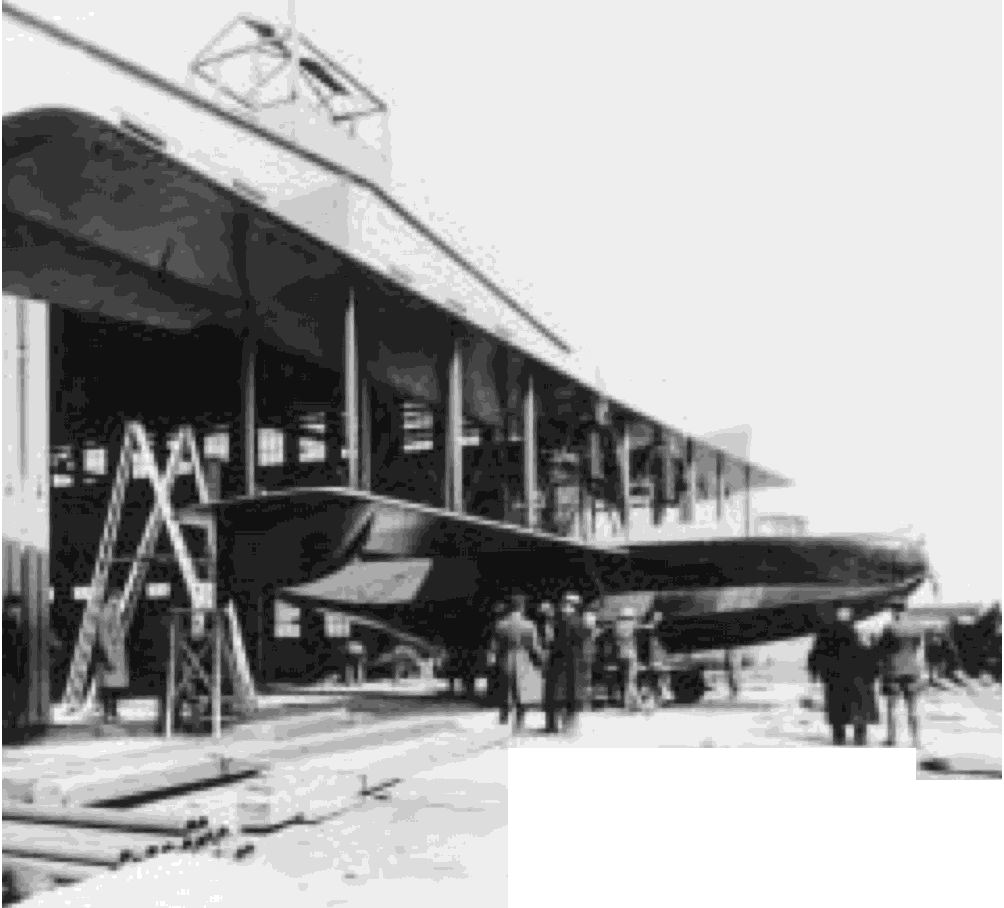
1918-Continued
Station, Lieutenant Commander Louis H. Maxfield in
command.
3 March
Dirigibles in France-The AT-l (Astra-
Torres), having been obtained from the French on 1
March, made its first flight under American control at
Paimboeuf, France. Prior to the armistice, the Navy
obtained 12 dirigibles from the French.
6 March
The Bureau of Navigation established instru-
ment allowances for naval aircraft allotting a compass,
two altimeters and a clock for service seaplanes and
flying boats; a compass, altimeter, clock and stato-
scope for dirigibles and free balloons; and an altimeter
and clock for kite balloons and training planes.
6 March
An unmanned flying-bomb type plane was
launched successfully and flown for 1,000 yards at the
Sperry Flying Field, Copiague, Long Island, NY The
launching device was a falling weight type catapult.
7 March
The Office of the Director of Naval
Aviation was established in the Office of the Chief of
Naval Operations and the Aviation Section became a
Division.
9 March
A revised training program for Naval
Aviators, Seaplanes, was initiated which provided that,
after a period of general training, all student aviators
specialize in one of three general types of seaplanes;
that they follow a syllabus which divided the program
into elementary, advanced, and advanced specializa-
tion courses; and designated the stations at which the
respective courses would be given.
15 March
The Bureau of Construction and Repair
directed that all new naval aircraft be painted in low
visibility naval gray enamel.
19 March
As combat operations underlined the
need for Aviation Intelligence Officers, Commander,
Naval Aviation Forces, Foreign Service, distributed a
circular letter defining the duties and functions per-
formed by such officers at Royal Navy Air Stations
with the suggestion that provisions for similar services
be made at naval air stations "as may seem expedi-
ent." Supplementary letters clarified the duties and
functions and on 31 October it was specifically stated
that Aviation Intelligence Officers be specially trained
for this work.
19 March
A formation of flying boats, on long range
reconnaissance off the German coast, was attacked by
UNITED STATES NAVAL AVIATION
1910-1995
33
German seaplanes. Ensign Stephan Potter shot down
one of the attackers and was credited officially as
being the first American Naval Aviator to shoot down
an enemy seaplane.
21 March
The HA seaplane, or "Dunkirk Fighter,"
made its first flight at Port Washington, Long Island,
N.Y., with Curtiss test pilot Roland Rohlfs at the con-
trols and Captain Bernard L. Smith, USMC, occupying
the second seat.
25 March
Ensign John F. McNamara, flying out of
RNAS Portland, England, made the first attack on an
enemy submarine by a U.S. Naval Aviator. For his
attack, reported by Admiral Sims as "apparently suc-
cessful," Ensign McNamara was commended by the
Secretary of the Navy for his "valiant and earnest
efforts on this particular occasion."
27 March
The first aircraft built at the Naval Aircraft
Factory, the H-16, Serial No. A-I049, was flown for the
first time. The H-16 was used in antisubmarine patrol
from U.S. and European stations, and for this purpose
was equipped with two 230-pound bombs and five
Lewis machine guns; one forward, two aft, and two
amidships.
30 March
The Curtiss 18-T or "Kirkham" triplane
fighter was ordered from Curtiss Engineering
Corporation. This single-engine, two-seater landplane
was fitted with two synchronized and two flexible
guns.
I
-J
First NAF-built H-161eaving assembly building
NAF 2121
 |
11 |
 |